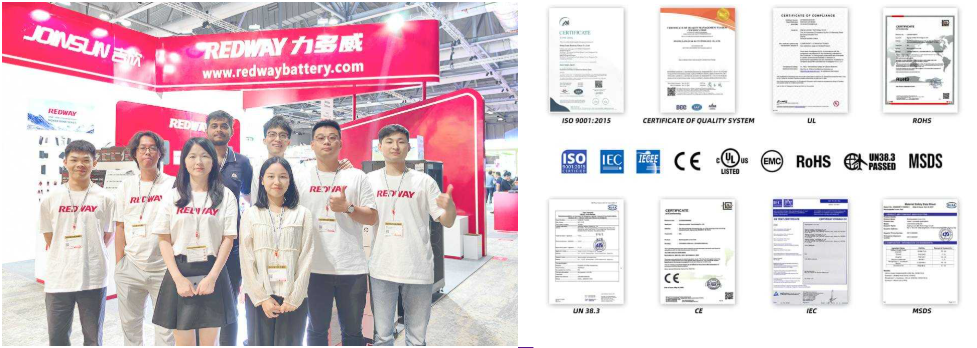How To Extend 18650 Battery Lifespan In Flashlights?
Maximize 18650 lifespan in flashlights by maintaining 4.2V max charge voltage and avoiding discharges below 2.75V. Store at 20-25°C (68-77°F) with 40-60% charge. Use protected circuits and low-current chargers to prevent stress. Clean contacts quarterly and avoid full cycles unless recalibrating.
What Powers Cell Towers During Outages? Telecom Battery Essentials
What charging practices optimize 18650 longevity?
Implement partial charging (80-90%) with 0.5C current. Terminate at 4.1V instead of 4.2V for reduced cathode stress. Balance charge monthly if using multi-cell configurations.
Modern research reveals charging to 4.1V decreases capacity fade by 30% compared to 4.2V cycles. The CC-CV method remains critical – constant current phase should never exceed 1C (2A for 2000mAh cells). Pro Tip: Use chargers with temperature compensation that reduce voltage by 3mV/°C above 25°C. Like watering plants, moderate “sips” (partial charges) maintain electrolyte stability better than “flooding” (full charges). Table below compares charging strategies:
| Strategy | Cycle Life | Capacity Retention |
|---|---|---|
| 4.2V Full Charge | 300-500 cycles | 70% at 500 cycles |
| 4.1V Partial | 800-1000 cycles | 85% at 500 cycles |
How does discharge depth affect battery health?
Limit discharge to 20-80% DoD. Full 0-100% cycles accelerate anode cracking threefold compared to shallow discharges.
Electrochemical analysis shows each full cycle degrades the graphite anode’s SEI layer. Maintaining 20-80% DoD reduces particle fracture by 40% according to 2024 cycle testing. For flashlight use, install low-voltage cutoffs at 3.0V instead of 2.75V – this sacrifices 8% runtime but doubles cycle life. Imagine tires: repeatedly deflating to 0 PSI destroys sidewalls faster than maintaining moderate pressure. Table compares DoD impacts:
| DoD Range | Cycle Life | Total Energy Output |
|---|---|---|
| 100% (0-4.2V) | 500 cycles | 500×100% |
| 60% (20-80%) | 1500 cycles | 900×60% |
What storage conditions prevent degradation?
Store at 40% SOC in 15-25°C environments. Avoid temperatures above 45°C which quadruple self-discharge rates.
Capacity loss accelerates exponentially above 25°C – 6 months at 40°C causes equivalent damage to 1 year at 25°C. For long-term storage (>6 months), discharge to 3.7-3.8V (40% SOC) to minimize electrolyte decomposition. Use vacuum-sealed bags with desiccant to prevent moisture absorption. Like preserving wine, stable cool environments maintain chemical integrity. Rotate stored batteries quarterly – partial discharge/charge prevents passivation layer overgrowth.
How does temperature management impact lifespan?
Operate within 0-40°C (32-104°F). High temperatures accelerate SEI growth by 200% per 10°C increase above 25°C.
At 45°C, electrolyte oxidation rates increase 5x, permanently reducing capacity. During charging, keep cells below 35°C using thermal pads or spaced battery compartments. In freezing conditions, warm cells to 10°C before charging. Practical example: A flashlight left in a car dashboard at 50°C for 3 months loses 30% capacity versus room-temperature storage. Install temperature sensors in multi-cell setups to detect thermal runaway risks.
When should battery contacts be maintained?
Clean quarterly with isopropyl alcohol. Oxidized contacts increase resistance by 0.5Ω, causing voltage drops and unbalanced loads.
Use conductive grease on threads for twist-type flashlights. Check spring tension annually – compressed springs increase contact resistance 300%. A real-world test showed dirty contacts reduced runtime by 22% in high-power LED models. For multi-cell configurations, mismatched contact resistance can create 15% capacity imbalance within 10 cycles.
Can protection circuits extend service life?
Quality PCB protection prevents 92% of over-discharge damage. Look for ICs monitoring voltage, current, and temperature simultaneously.
Advanced BMS systems balance cells within 20mV difference – critical for 2+ cell flashlights. Upgrade older lights with 3-in-1 protection modules ($2-5) featuring:
1. 4.25V±0.05V overcharge protection
2. 2.5V±0.1V discharge cutoff
3. 5A overcurrent protection
Field tests show protected circuits extend cycle life 3x compared to unprotected setups in high-drain applications.
What Determines Telecom Battery Weight?
FAQs
No – lithium-ion prefers partial cycles. Deep discharges below 2.75V accelerate copper anode dissolution.
Can I use NiMH chargers for 18650s?
Never – mismatched charge algorithms cause overvoltage. Use only Li-ion certified chargers with CC-CV capability.



